THE PERFECT SMOKING RECIPE FOR WILD TASMANIAN TROUT
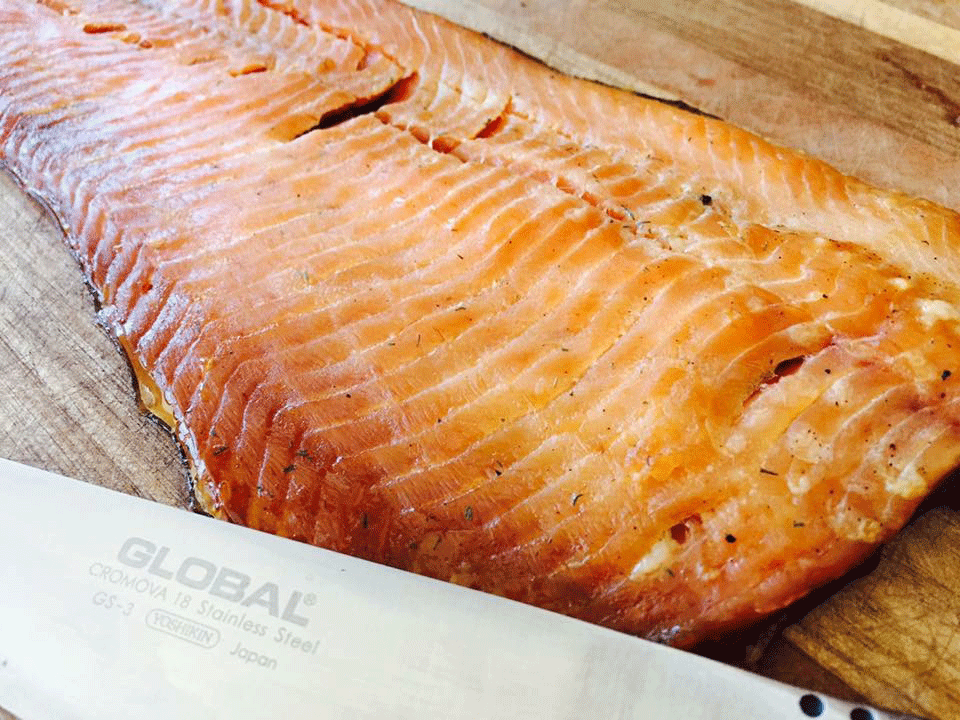
Introduction
I have been smoking fish since I was a child. My European background meant that I learned these skills from an early age, from my father. Using a homemade wood-fired hot smoker, we would smoke eels predominantly, but sometimes trout too. My ‘backyard fish smoking’ apprenticeship lasted for years; however, when I was 12 years old, my father was finally happy to leave me in charge of the whole process.
To this day, I have maintained a keen interest in smoking fish. The only difference is that now, given my keen interest in fishing for them, I primarily smoke trout. Over the years, I have made several homemade fish smokers, and have smoked a variety of fish. In the early days, I stuck religiously to the traditional salt plus water brine; however, in more recent years, I have been experimenting with lots of different brine recipes.
Part of the secret to getting any smoked fish right is the brine. It is the first part of the ‘preserving’ or ‘curing’ process and is a crucial step that cannot be overlooked. Realistically, a simple mix of salt plus water is all that is required to make a basic brine solution. However, there are better recipes out there for those who want to go a step further and make something really special!
On a recent trip to British Columbia, in Canada, I stumbled upon one of the best tasting brines I have ever had. As you would expect, the Canadians are very good at smoking their fish. Their skills of smoking wild salmon have been refined over many generations and it is something that they are really proud of.
Unfortunately, we don’t have those beautiful Chinook or Sockeye salmon here in Tasmania. But, in my opinion, we have the next best thing – trout, and this is the perfect brine for smoking any type of trout, or indeed, any farmed atlantic salmon found in Tasmanian waters.
Follow these simple steps:
Cleaning your trout
Use only freshly caught trout for this recipe. Remember that any fish will begin to spoil the minute you land it. Enzymes and bacteria go to work straight away and they will take away flavour from your fish and break down the flesh. So, when you land a trout that you intend to keep – bleed it, clean it and put it on ice in your esky. The fish also has to be super clean. Any blood left on the fish will impart an unpleasant flavour in the final product, so make sure that you remove all traces of the blood line. Using a small spoon can make this task quick and easy.
There is no need to scale the trout for smoking. The skin is not eaten and the scales will actually help seal in moisture during the process. It is wise to leave smaller fish cleaned whole (head attached), as they have a tendency to dry out in the smoker. Due to the thickness of the flesh, larger trout and large atlantic salmon are best filleted (skin on).
Brining

Canadian Brine:
6 litres of cold water
2 cups of table salt (non-iodised)
2 cups of brown sugar
4 tablespoons of garlic powder
8 tablespoons of onion powder
250 ml bottle of maple syrup
Add cold water to a suitable receptacle with a lid. An old esky is perfect. Add all of the above ingredients, except the maple syrup, to the water. The ingredients must be dissolved well in the water. I use a Bamix stick blender to do, and it works beautifully.
The resulting brine should be a weak to mild tasting one. I always taste it, just to make sure that it is not too salty. If you can handle the salt level of your brine during this tasting, then you are headed in the right direction with your recipe. If the taste is too salty, you can always add more water. If you follow the quantities suggested in the recipe above, then you shouldn’t have any problems.
Next, submerge your fillets and/or whole trout in the brine. Seal your container or esky with the lid and leave the fish in it for 24 hours. If it is a hot day and you are worried about spoilage, then a plastic soft drink bottle of water that has been frozen can be added to the brine. This will ensure that the contents remain appropriately cooled.
Air drying
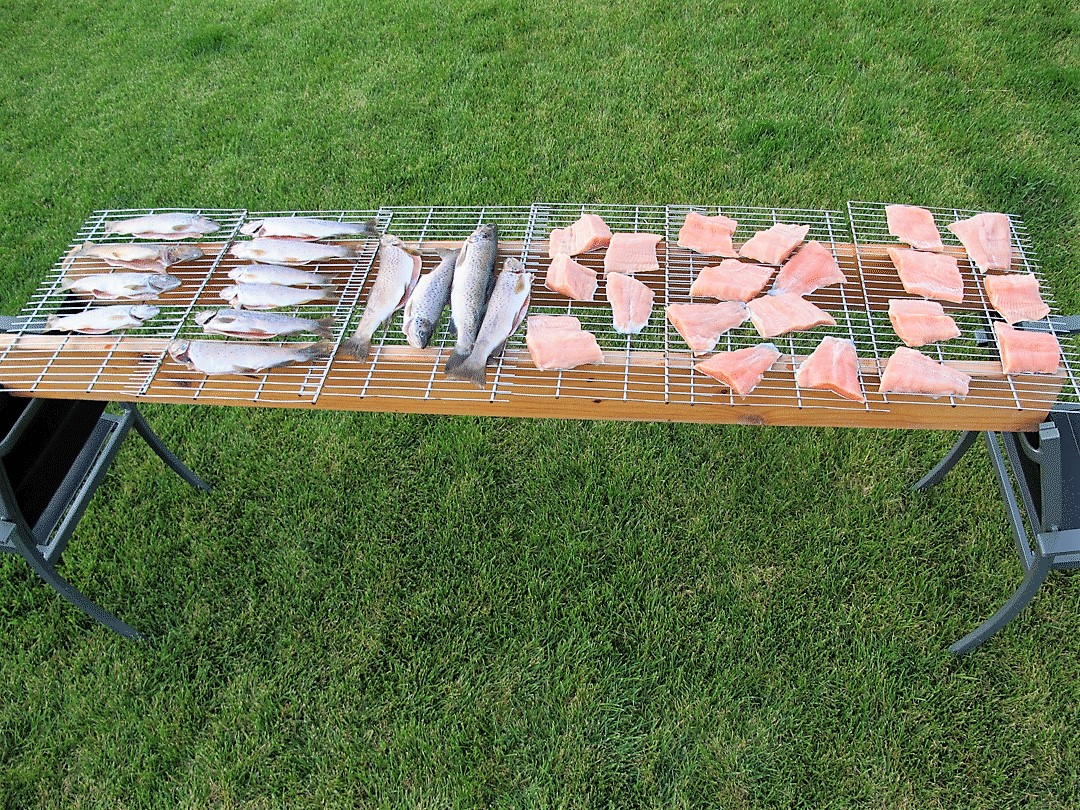
After 24 hours, remove the fish from the brine. Discard the brine as it can’t be used again. The fish will be slimy and not very appealing, but don’t worry. Give them a light wipe with a piece of paper towel. The fish do not need to be rinsed in fresh water, as you may do with a traditional salt plus water brine, as this particular brine recipe is not overly salty.
Remove the wire racks from your smoker and set up a drying area. In winter I do this outside as there are no flying insects to worry about. In summer, it’s a good idea to set it up in a sealed garage, with newspapers placed under the racks. You certainly don’t want flies or wasps getting at your fish.
Leave the fish to air dry for at least 2 hours (this will depend on the temperature***). The skin should be fairly dry to touch, although a little tackiness is fine. This drying process is crucial as it allows the formation of, what is called, a ‘pellicle’ on the skin. In short, this step helps to seal in the moisture and preserve the end product. It will also prevent the fish from sticking to your smoker racks to some extent. If you are worried about the fish sticking, you can lightly grease the racks with rice bran oil.
Application of the maple syrup
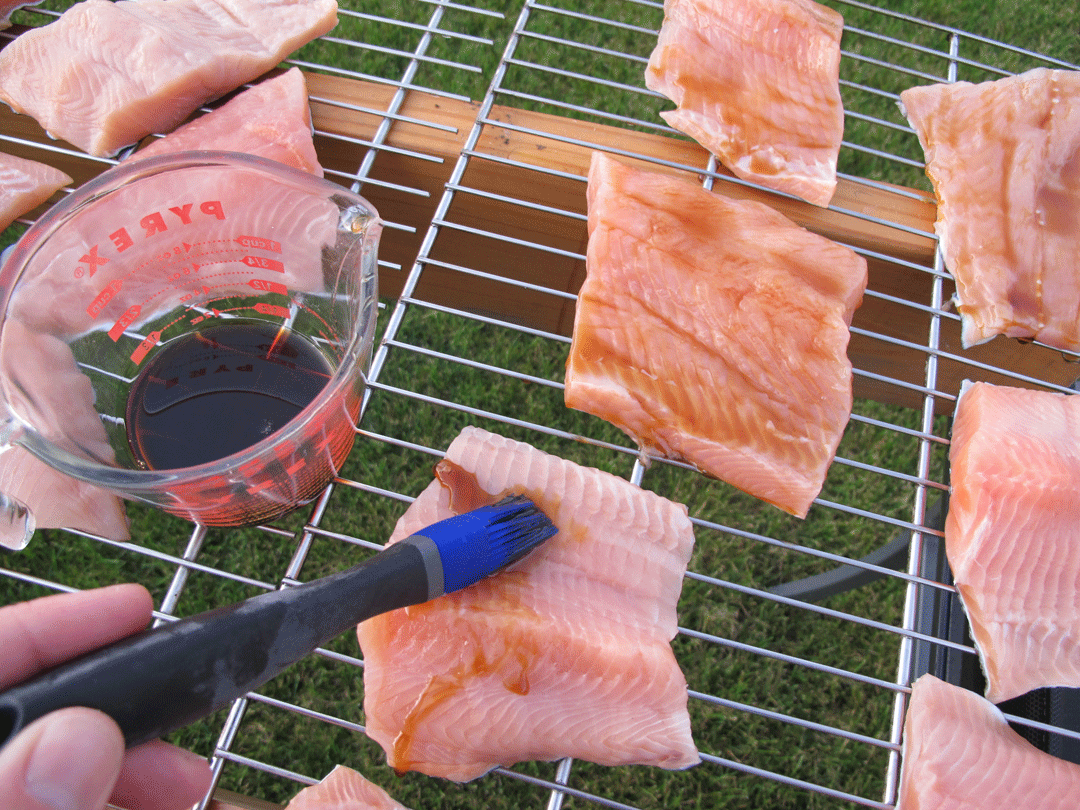
Being Canadian, this recipe uses maple syrup. No surprises there - they put the stuff on everything! So once your fish have air dried, grab a basting brush and a cup full of maple syrup. It is best to use the proper Canadian syrup and not the imitation stuff, which contains heaps of artificial additives.
If using whole trout, then baste the entire fish, inside and out, with a generous amount of syrup. If you are smoking fillets, then it is sufficient to just baste the flesh. After you have basted everything, it is time to start the smoking process. There is no need for further drying after the addition of the maple syrup.
Hot Smoking
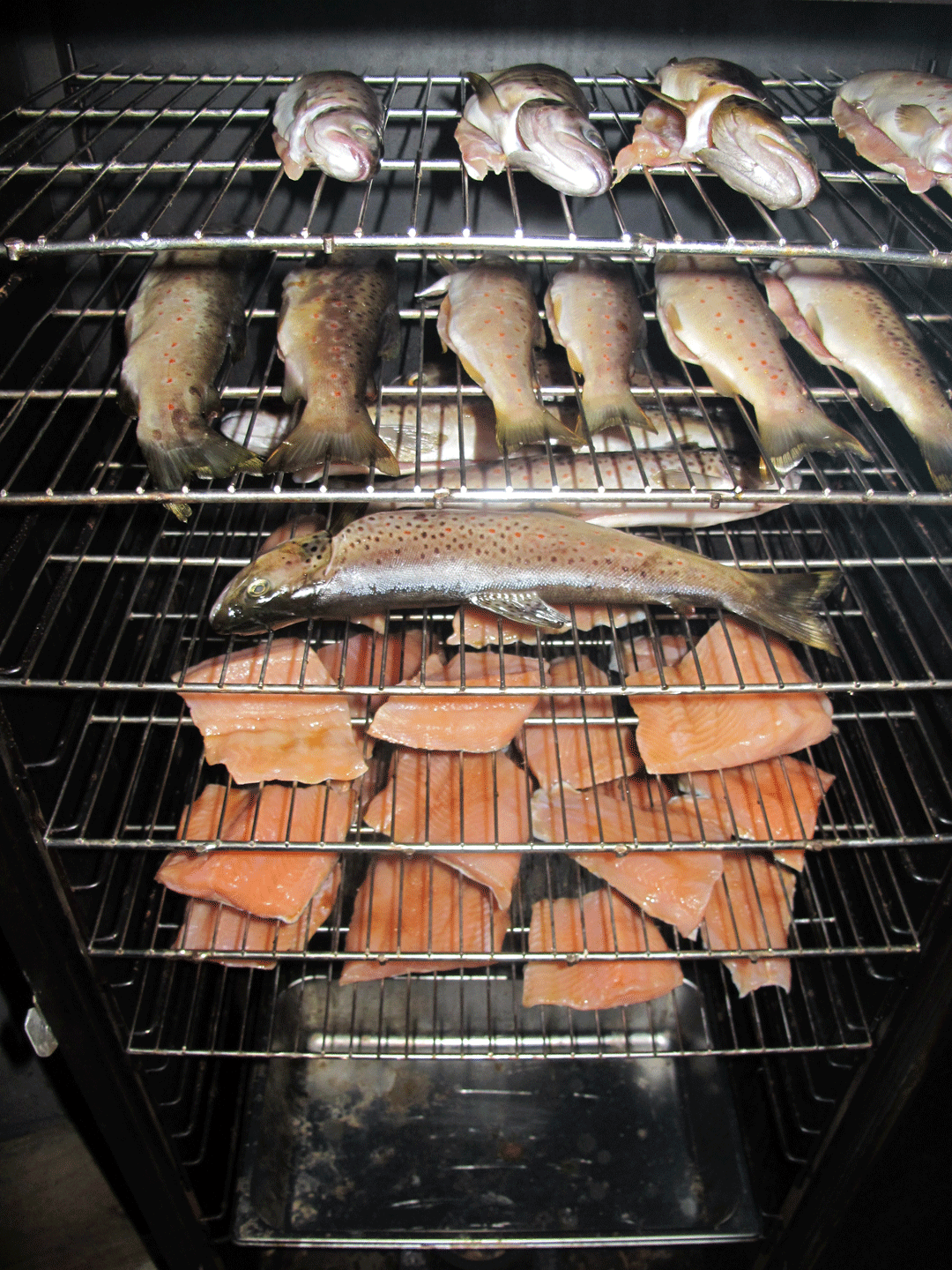
Above: the start of the smoking process.
Your smoker will need to be fired up well in advance (a good 30 minutes). You are aiming to get the smoker to a temperature of 60°C. Place mesquite wood chips in your smoker box. If you are using an electronic Bradley smoker (or similar), then load the mesquite bisquettes as per the instructions. Aim for a very light smoke by not using too many chips at once. Once you have reached the required temperature and the smoke level is appropriate, it is time to load the smoker. Stack the racks in order of fish thickness. I place smaller fish towards the top of the smoker and larger pieces towards the bottom (where temperatures can be slightly higher).
Close the door and smoke your fish at 60°C for three hours. Then, for the last hour (four hours in total), increase the temperature to 80°C. The last hour at a higher temperature will ensure that any potentially harmful bacteria will be destroyed. A bit over 80°C is fine, but be careful not to bake the fish.
After four hours, the smoked trout should be ready. The end product should have a golden colour. When pushed with your finger, the flesh should be firm, but still moist. If it is mushy, then the fish will need a little more time in the smoker. Obviously the bigger the fish, the more time they will require.
If you are smoking whole trout with the head on, then looking at the eyes of the fish can tell you whether they are cooked or not. If the eyes are white (like a hard-boiled egg), then your trout are properly smoked and ready to eat.
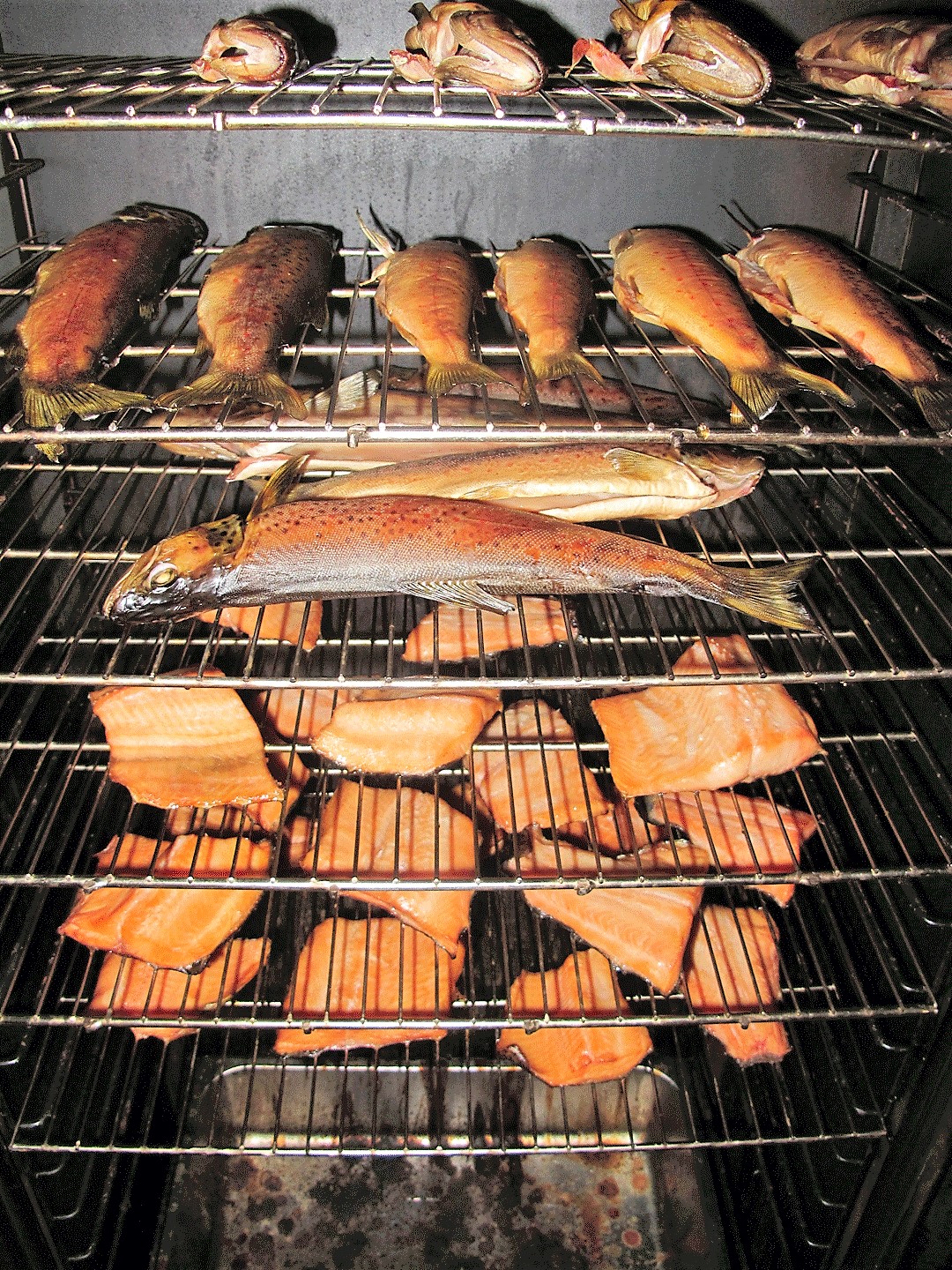
Above: the end of the smoking process - note the golden colour of the fish.
Storage
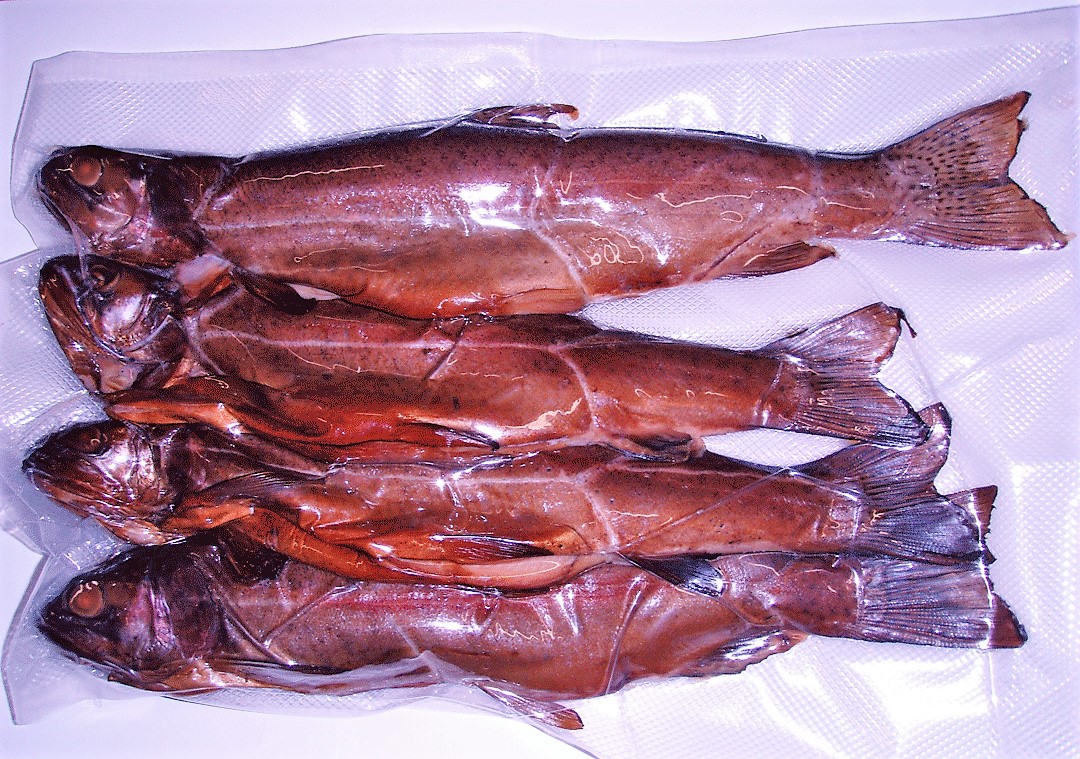
Smoked trout should be stored in the refrigerator at all times. If you have access to a vacuum sealer, then the life of your product can be extended significantly. Check with your local tackle store - they are a great investment for smoking fish but are useful for lots of other foodstuffs.
Trout smoked using this method (and vacuum sealed) will keep for around four weeks if stored under 4°C in your refrigerator; however, make sure that the fish are completely cooled before sealing. Vacuum sealed and frozen, smoked trout will keep for up to 12 months.
When packing and storing any type of smoked fish, hygiene is very important. Never prepare smoked fish for storage where it may come into contact with surfaces that have had raw fish or left over brine on them.
Serving suggestions
The skin should be rubbery and should be easy to peel off with your fingers. You can then flake the flesh off in chunks and remove any bones, should there be any. There are a number of ways that you can use this product: topping for pizza, mixed through pasta or salad, used in risotto or simply eaten with some biscuits. Bring a platter of it to your next barbeque or social gathering– your friends will be impressed. During my Canadian adventure earlier this year, I ate it served on a fresh bagel with a bit of cream cheese – simple and yummy!
Handy Tip
Don’t throw away the bones or the skin from your smoked trout. Put these otherwise useless left-overs into a small pot of boiling salted water. Boil and then simmer down to make a fish stock/broth. Strain and use the liquid instead of chicken stock when making a tasty smoked trout risotto!
Types of smokers
Without going into too much detail, there are many different types of smokers available at local Tasmanian tackle stores. If you are going to do a lot of smoking and are serious about it, then I would recommend a top of the range electric smoker. Something like a ‘Bradley’ or ‘Masterbuilt’ electric smoker would be my pick. They are built to last and feature the latest technology. Above all, they have precise electronic temperature control, which is very important when smoking any type of food, whether it is fish or smallgoods. A unit like this is a certainly a good investment if you are serious about smoking.
Smaller, methylated-powered box-style smokers are another alternative, and certainly a cheaper. Don’t get me wrong, the end product can still taste nice, but it will never be as good as true smoked fish. This is due to the high temperature these little smokers generate. Cooked fish with a smoke flavour is the end product. Sufficient – yes, but if you are going to make traditionally smoked fish that will last for a long time once smoked, then don’t use such a smoker. Don’t overlook them completely though - they are perfect companions for a trip up to the lakes!
Finally, there is the homemade smoker. They are easy to make if you have a plan and know what you are doing. It can be as simple as digging a steel barrel into the ground and making a fire pit at the bottom. My smoker is homemade, but a little more advanced. It is a hot-smoker powered by gas and can accommodate a large quantity of fish.
I have spent a lot of time perfecting the design and performance of this smoker. If you are a handy type of person, making one yourself might be the answer. There are plenty of places to start, beginning with a simple Google search. On the other hand, you can buy a professionally built smoker that will produce excellent results every time.
At the end of the day the choice is yours.
Check out a few of mine which I have made from scratch...
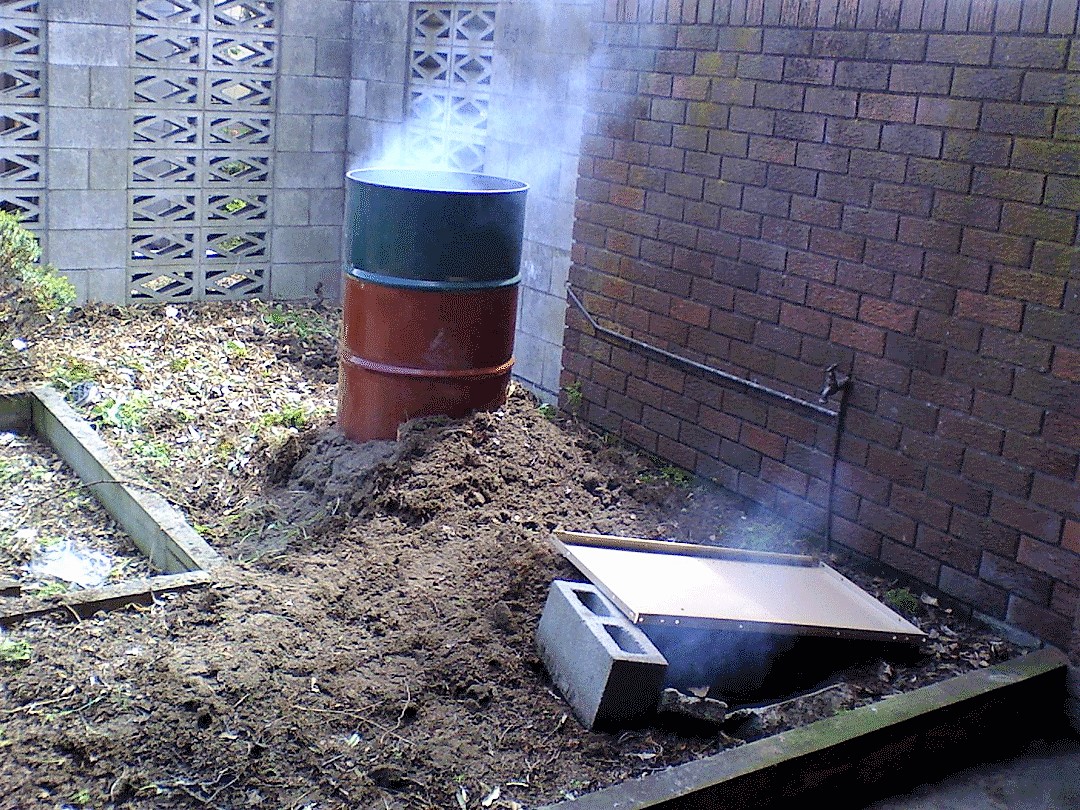
Above: the most simple and inexpensive homemade smoker.
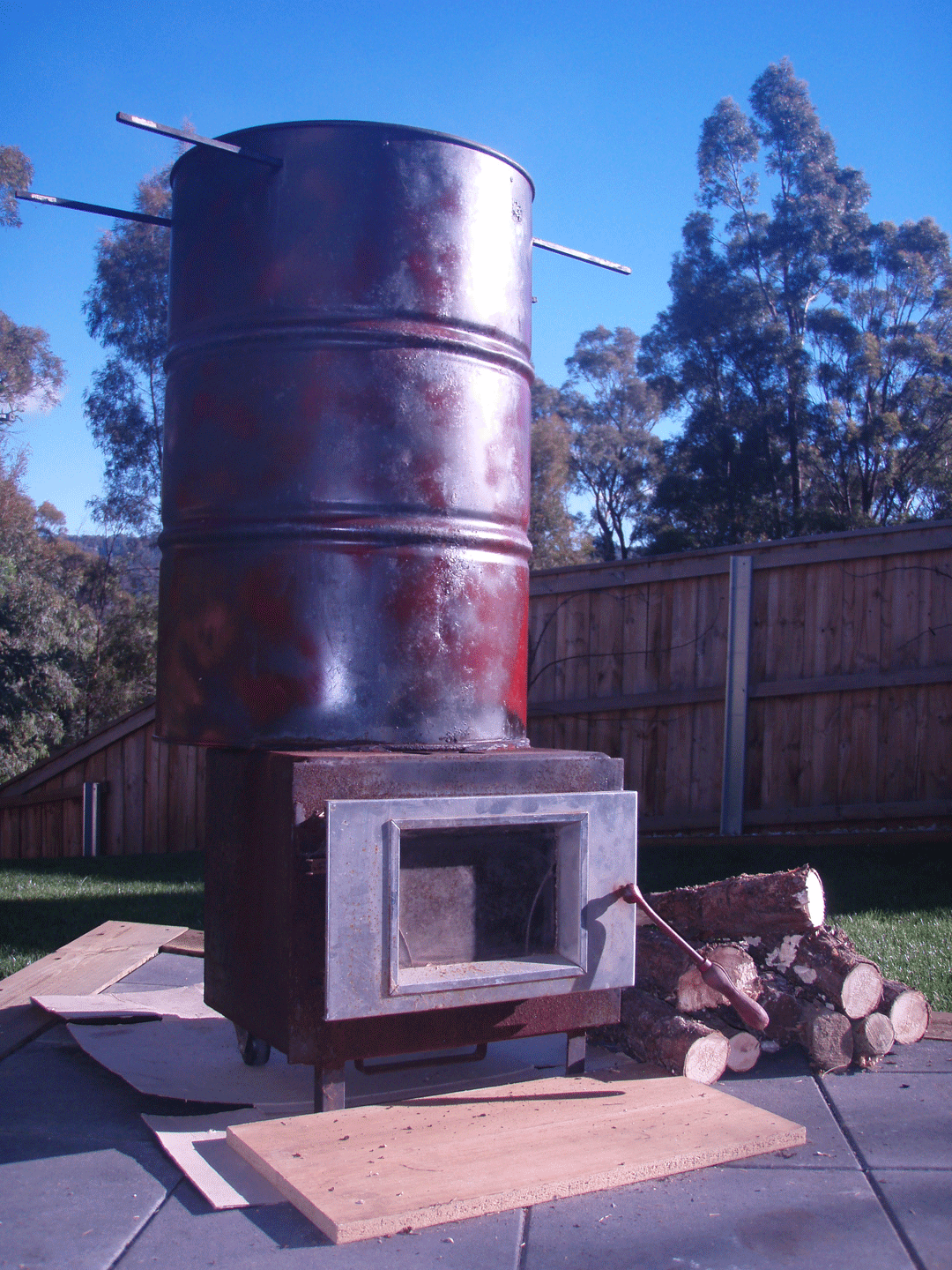
Above: a wood fired smoker made using an old wood heater firebox.
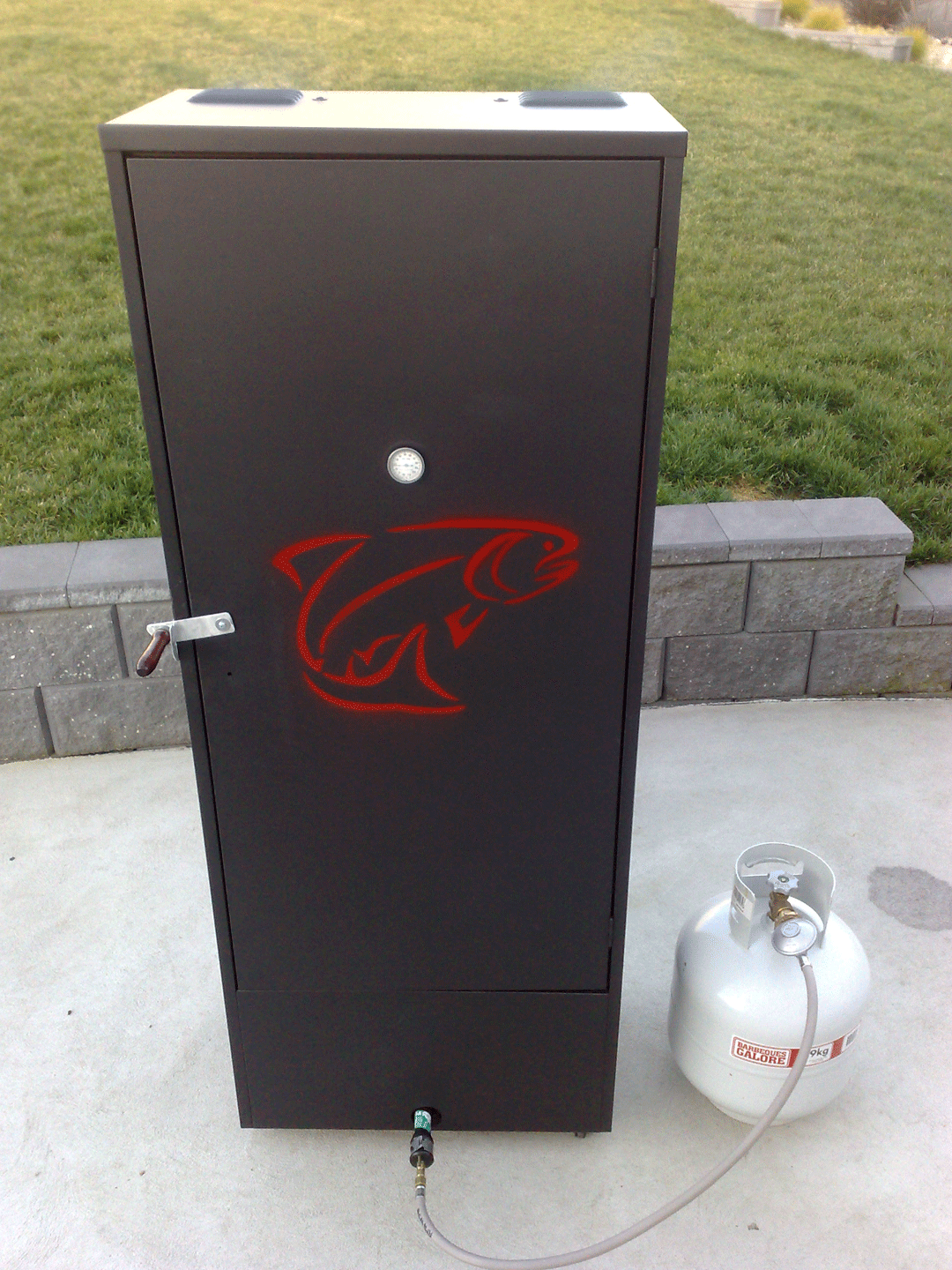
Above: my current smoker which is made from an old clothes drying cupboard.
Which wood is best?
This particular recipe uses mesquite, due to the light smoke flavour that it imparts. You will find that mesquite is relatively inexpensive and available from most tackle stores. There are also a variety of other woods that are suitable for smoking. Experimentation is the key to finding a flavour that you like.
Wood obtained from fruit trees is widely used throughout Europe. This is in contrast to Canada and the US, where some hardwoods, like mesquite, are popular. You can try apple, pear, cherry, apricot and even plum. But avoid using resinous woods such as pine or citrus. They will impart an unpleasant bitter flavour to your fish.
Certain native Australian hardwoods are also a good choice, which you may be able to find in your own backyard. Otherwise, try your local tackle store. A few suggestions are red gum, spotted gum and sheoak.
Lastly, never, ever use treated pine!
You don’t have to be a rocket scientist to figure out why!
